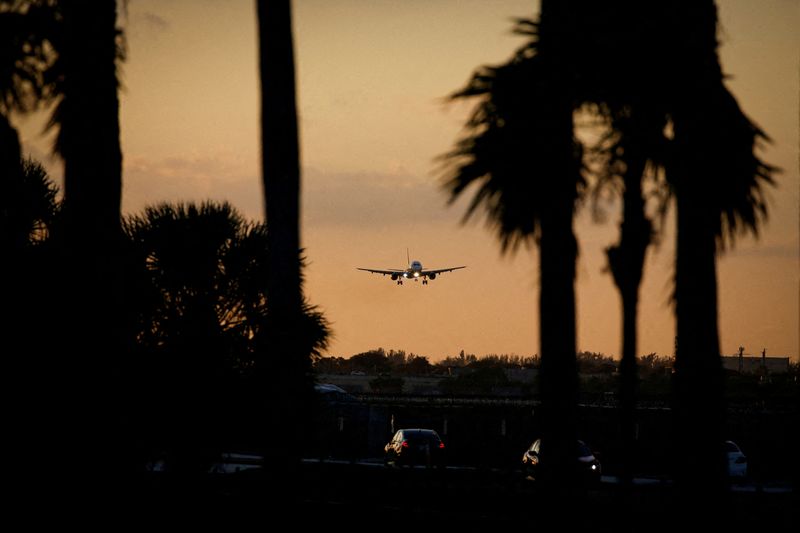By David Shepardson
WASHINGTON (Reuters) -The Federal Aviation Administration (FAA) said on Wednesday it is requiring that new passenger airplanes have a secondary barrier to the flight deck to prevent intrusions.
The final rule, which was first proposed in July, requires aircraft manufacturers to install a second physical barrier on planes used in commercial passenger service in the United States. The FAA said the additional barrier will protect flight decks from intrusion when the flight deck door is open.
The requirements are to take effect two years from the effective date, which is expected to be in August. Unions had urged that the rule take effect one year after publication while Boeing (NYSE:BA) Co, Airbus SE (OTC:EADSY) and a major airline group had called for three years.
"Every day, pilots and flight crews transport millions of Americans safely - and today we are taking another important step to make sure they have the physical protections they deserve," said U.S. Transportation Secretary Pete Buttigieg.
The FAA was supposed to have adopted rules by 2019 under a 2018 federal law, but the agency has said it was required to follow procedural rules before it could impose new regulations.
After the hijacking of four U.S. airplanes on Sept. 11, 2001, the FAA adopted standards for flight deck security to make them resistant to forcible intrusion and unauthorized entry.
The FAA is not requiring existing airplanes to be retrofitted. A major pilots union has previously called on Congress to require that existing fleets be upgraded.
The FAA in 2007 set rules to address flight deck security when the cockpit door was opened, including requiring the door be locked when the airplane is in operation, unless necessary to open it to permit access by authorized persons.
Should you invest $1,000 in BA right now?
Don't miss out on the next big opportunity! Stay ahead of the curve with ProPicks AI – 6 model portfolios powered by AI stock picks with a stellar performance in 2024.
Unlock ProPicks to find out
